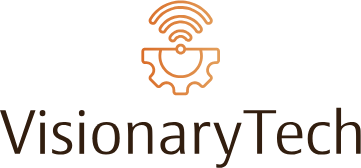Starting a personal blog is an incredible way to share your thoughts, experiences, and expertise with a global audience. Whether you want to blog about travel, cooking, tech, or personal development, this guide will walk you through the essential steps to kick-start your blogging journey.
1. Choose a Blogging Platform
The first step in starting a personal blog is choosing the right blogging platform. There are many options available, each with its unique features and benefits. Here is a comparison of some popular platforms:
| Platform | Key Features | Price |
|---|---|---|
| WordPress.org | Highly customizable, strong community support, thousands of plugins | Free (paid hosting required) |
| WordPress.com | All-in-one hosting and design, limited customization in free plan | Free to $45/month |
| Blogger | Simple setup, integrated with Google services | Free |
| Wix | Drag-and-drop design, customizable templates | $0 to $24/month |
| Medium | Built-in audience, easy to use | Free |
2. Choose and Register a Domain Name
Your domain name is your blog’s address on the web. Choose a name that reflects your blog’s topic and is easy to remember. Use domain registration services like GoDaddy, Namecheap, or Google Domains to check the availability of your desired name and register it.
3. Get Web Hosting
Web hosting is a service that allows your blog to be accessible on the internet. Depending on your chosen platform, you might need external hosting. Popular web hosting providers include Bluehost, SiteGround, and HostGator which offer affordable hosting plans and excellent services tailored for beginners.
4. Set Up and Customize Your Blog
Once you have a platform, domain, and hosting, it’s time to set up your blog. If using WordPress.org, install it via your hosting provider’s dashboard. Customize your blog by selecting a theme that suits your style and personality. You can find free themes in the platform’s repository or purchase premium themes from marketplaces like ThemeForest.
In addition to themes, plugins are essential for adding functionality to your blog. Important plugins for beginners include:
- Yoast SEO: For search engine optimization
- Akismet Anti-Spam: To filter spam comments
- Google Analytics Dashboard: For tracking website traffic
5. Create Compelling Content
Content is the heart of your blog. Start by writing blog posts that are informative, engaging, and relevant to your audience. Establish a content schedule to maintain consistency. Mix up your content types by including:
- How-to guides
- Personal stories
- Product reviews
- Interviews
6. Promote Your Blog
Promotion is crucial for driving traffic to your blog. Leverage social media channels like Facebook, Twitter, Instagram, and Pinterest to share your posts. Join blogging communities and forums to connect with other bloggers and readers. Consider using email marketing to build a subscriber base.
Optimize your posts for SEO by using keywords relevant to your niche. Include meta descriptions, alt texts for images, and ensure your blog is mobile-friendly to improve search engine rankings.
7. Engage With Your Readers
Building a community around your blog involves engaging with your readers. Respond to comments, ask for feedback, and encourage interaction. Hosting webinars, live Q&A sessions, and social media chats can help foster a strong relationship with your audience.
8. Monitor and Improve
Regularly monitor your blog’s performance using tools like Google Analytics. Track metrics such as page views, bounce rate, and average session duration to understand how your audience interacts with your content. Use this data to improve your blog strategy continuously.
Starting a personal blog requires careful planning and dedication, but with these steps, you’re well on your way to creating a blog that resonates with your readers and grows over time.

